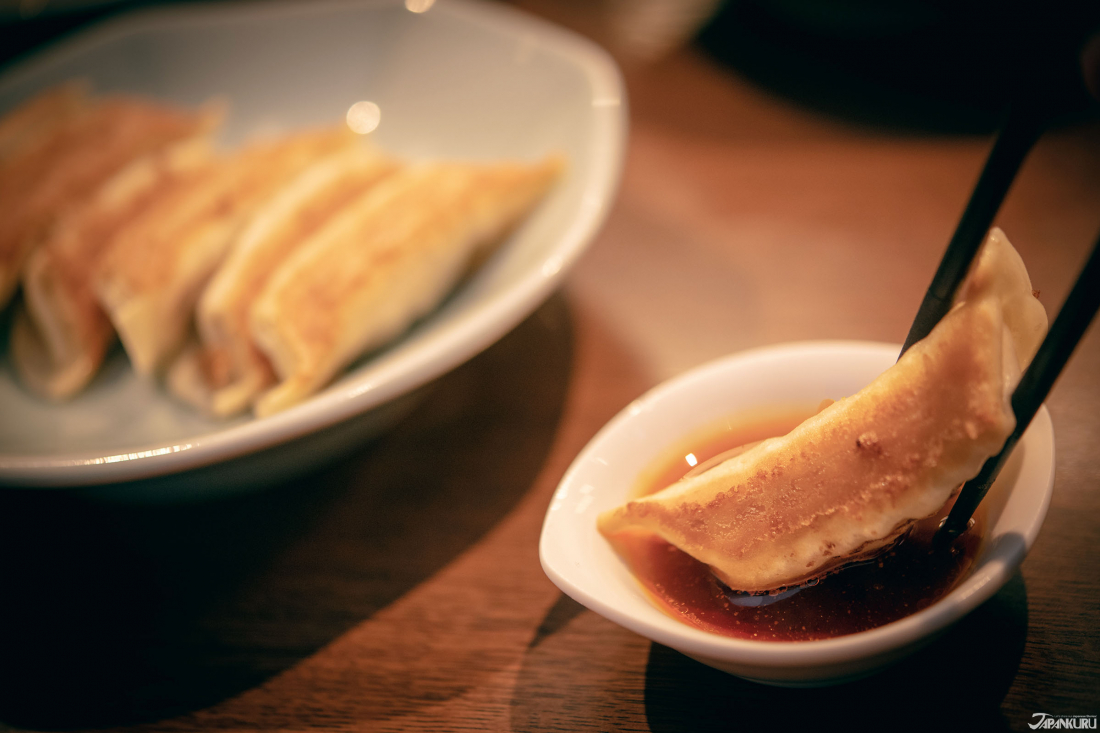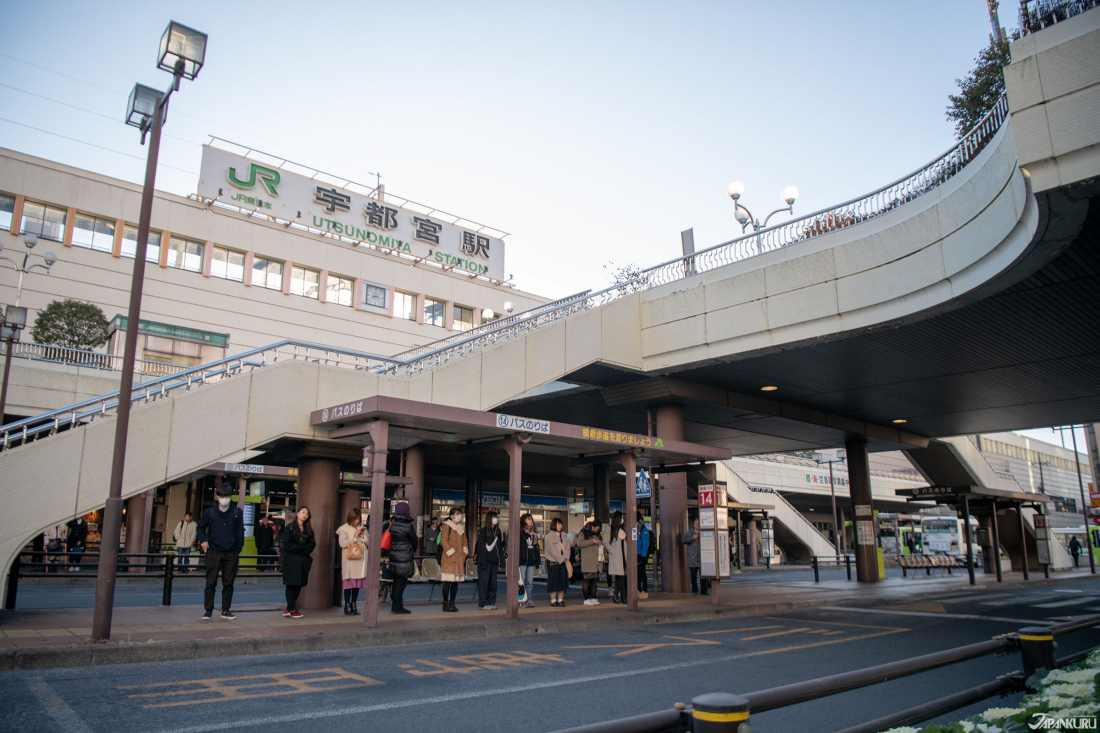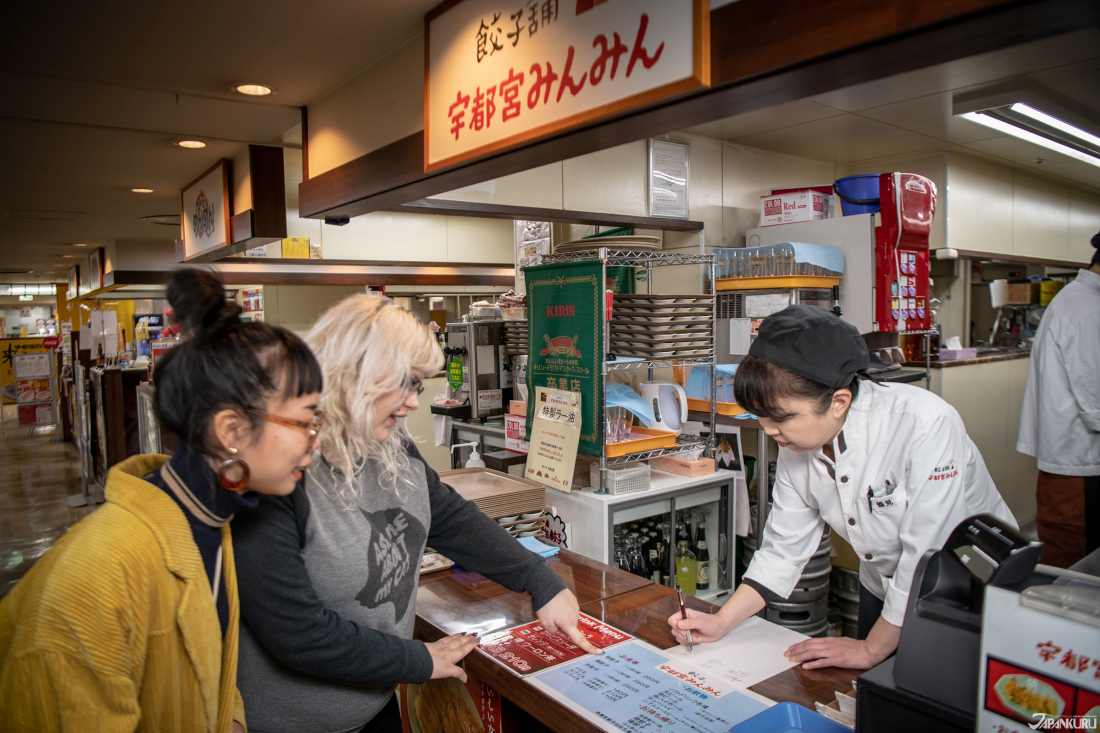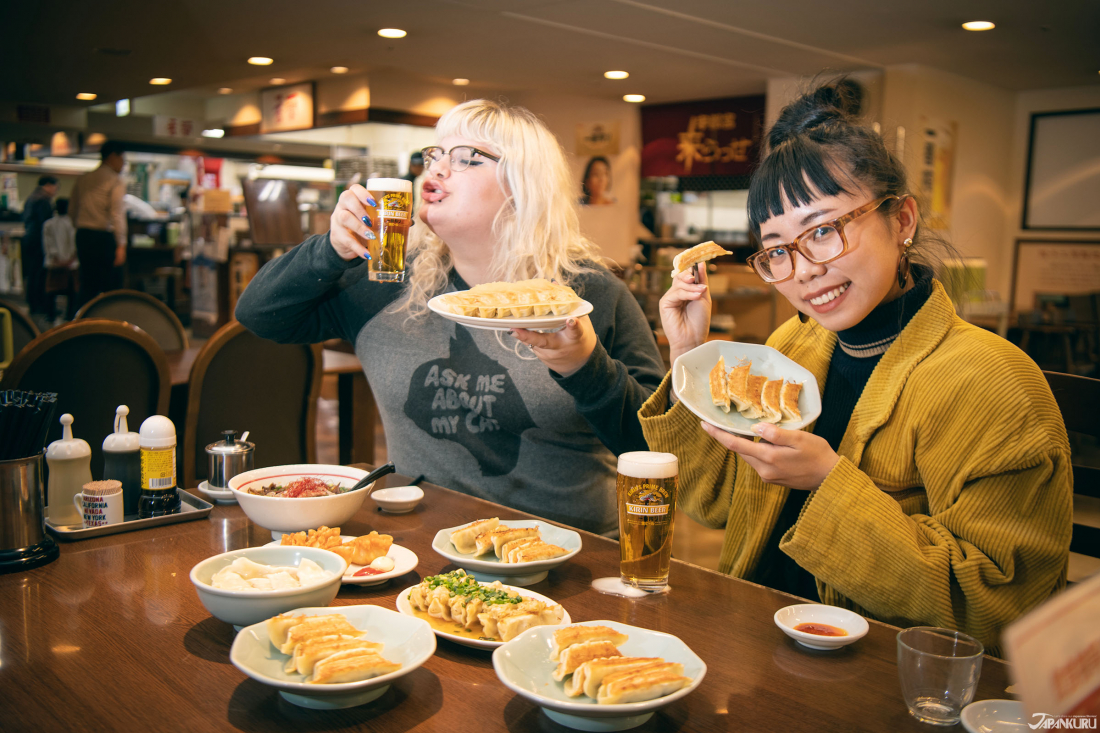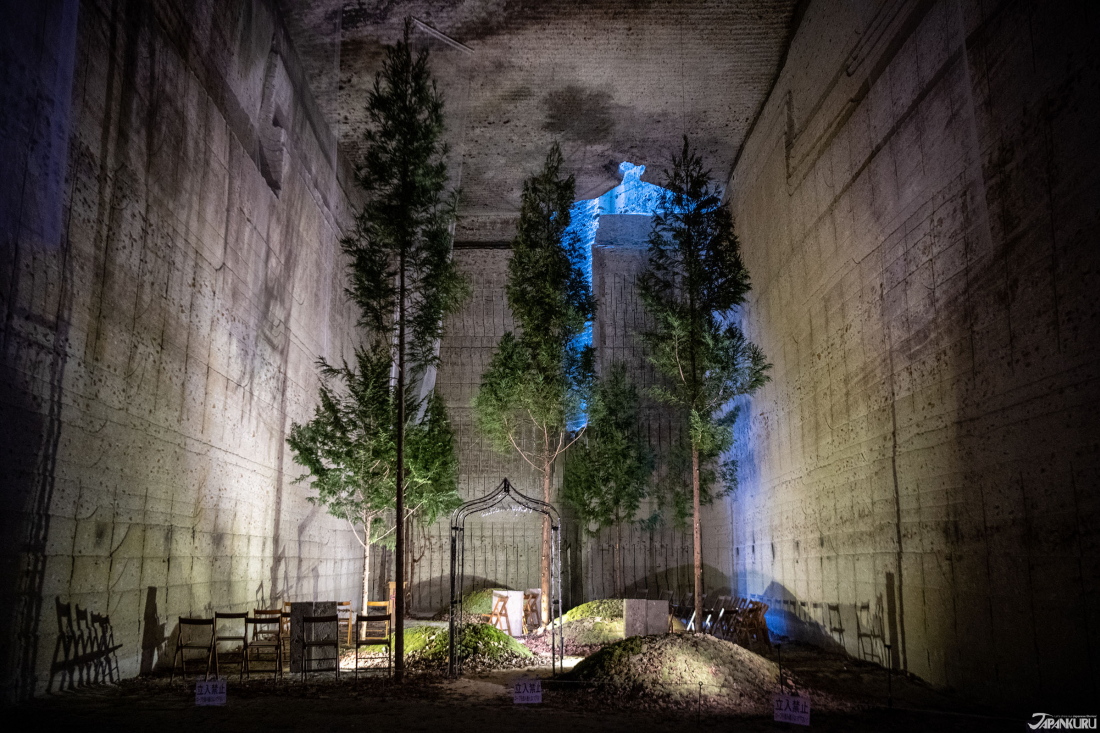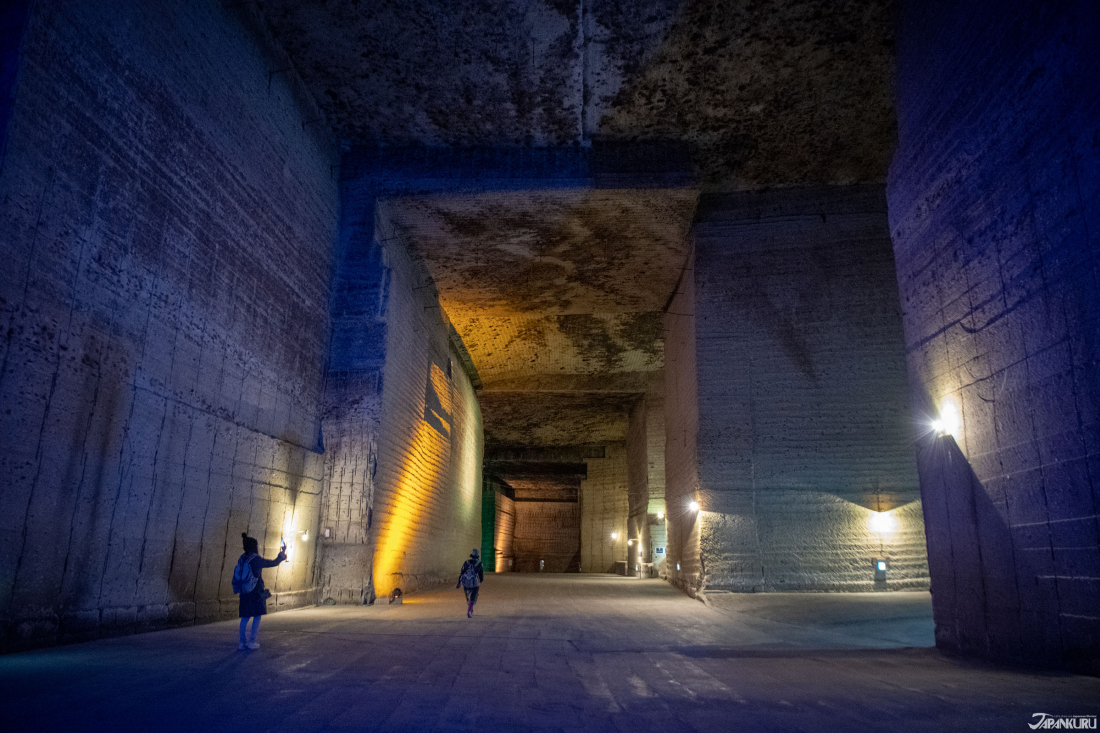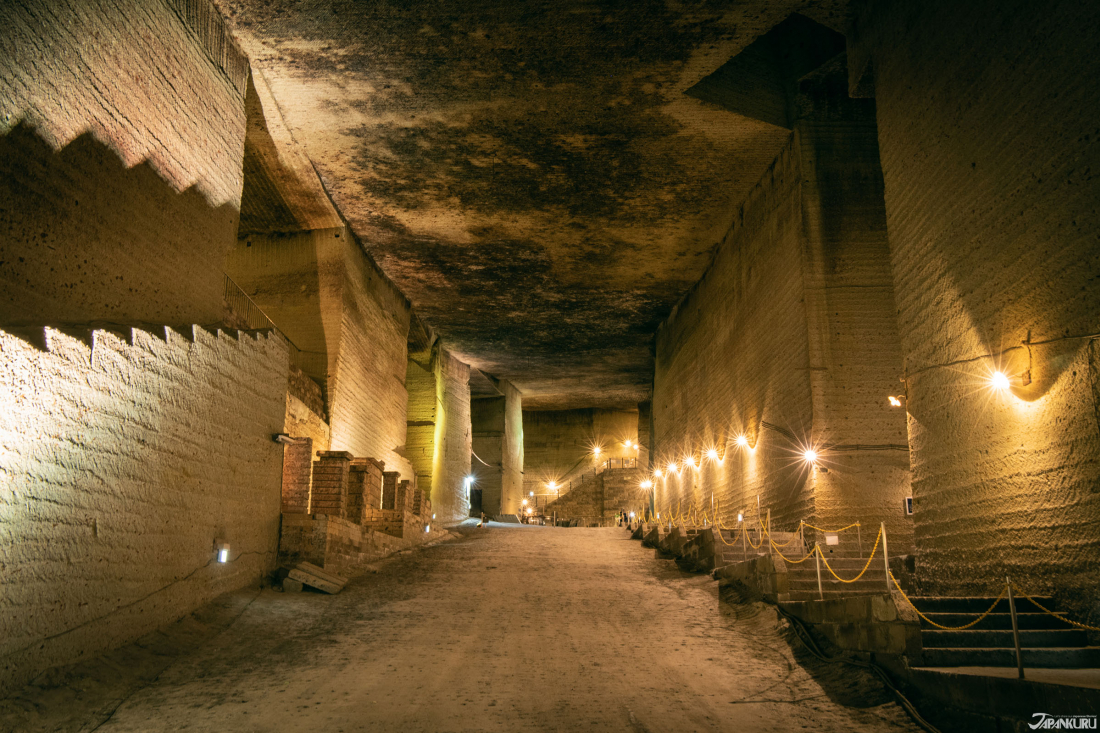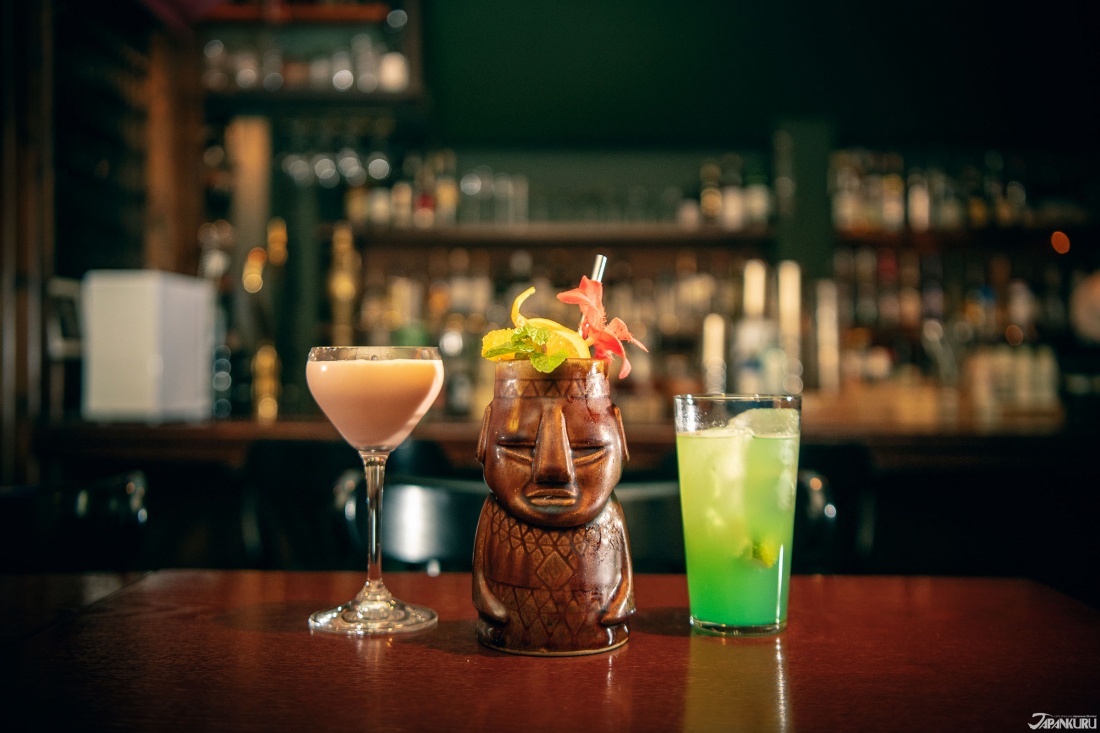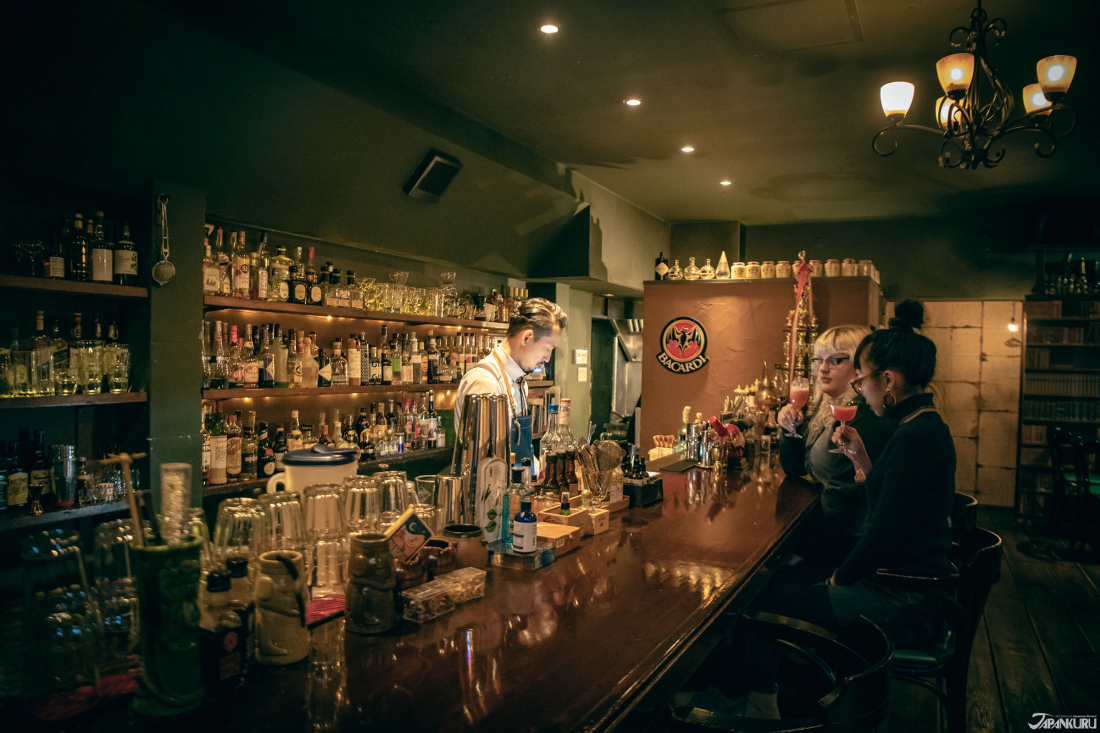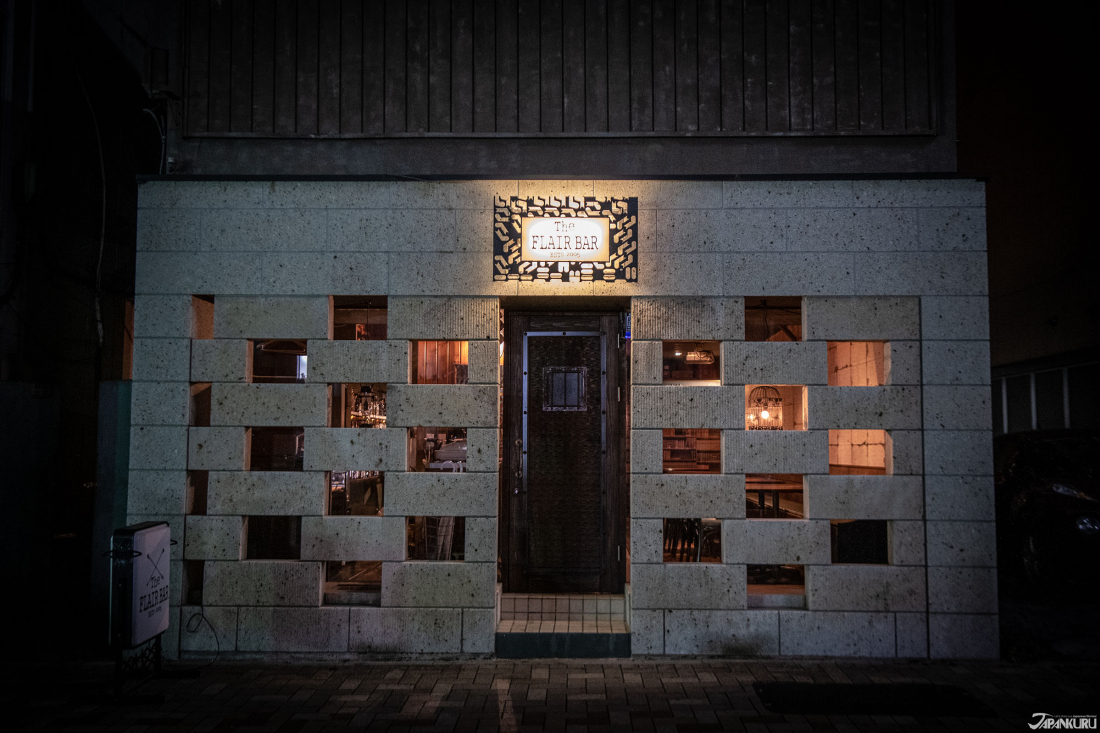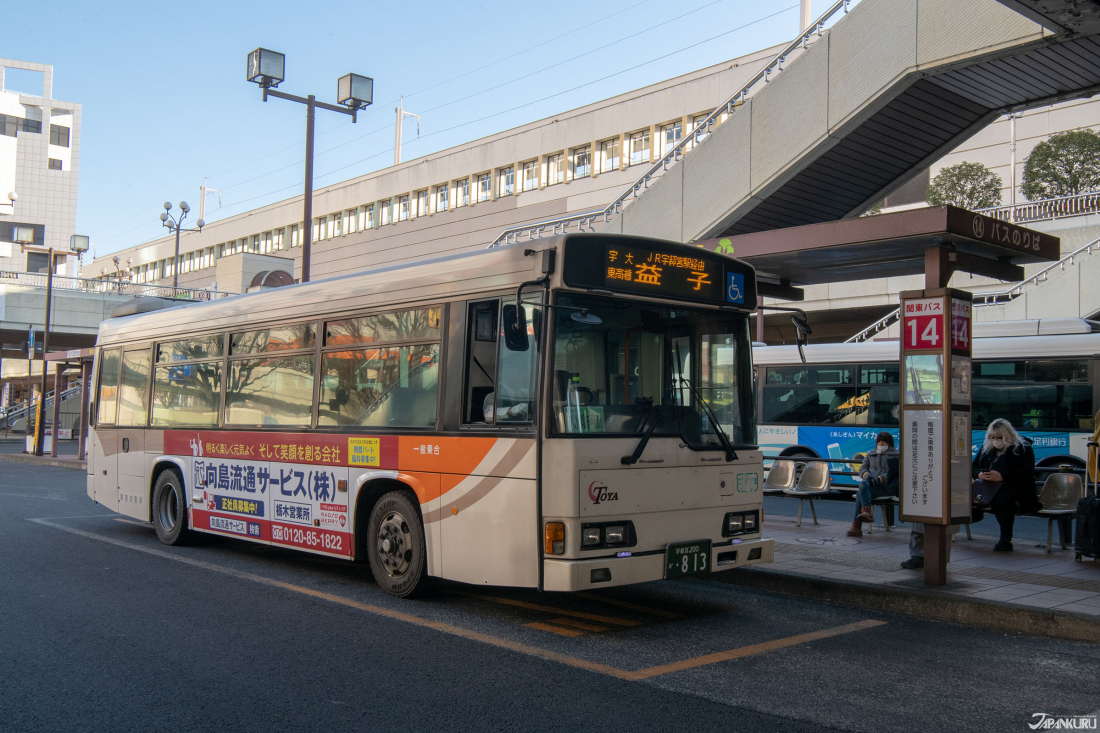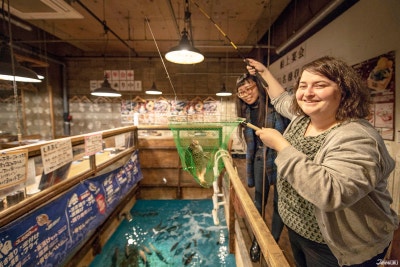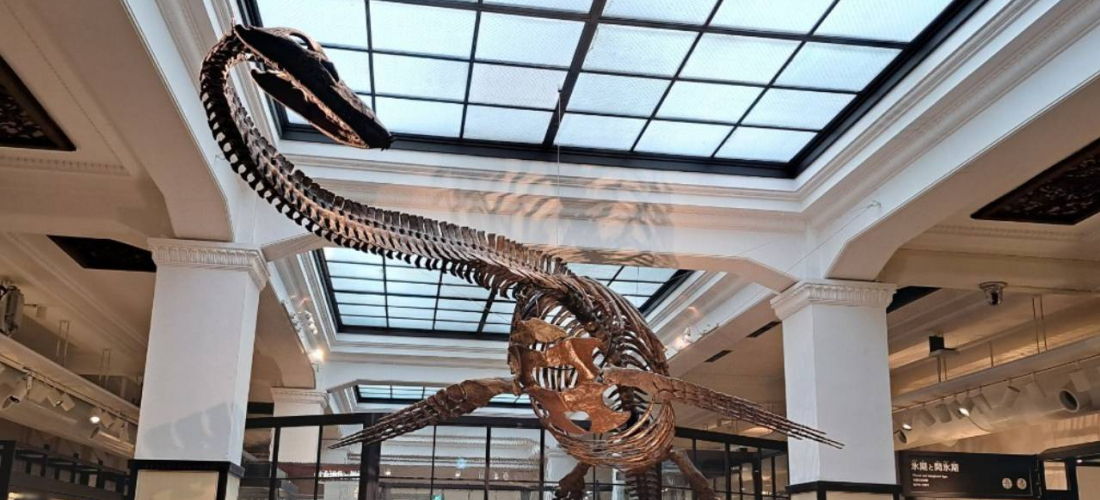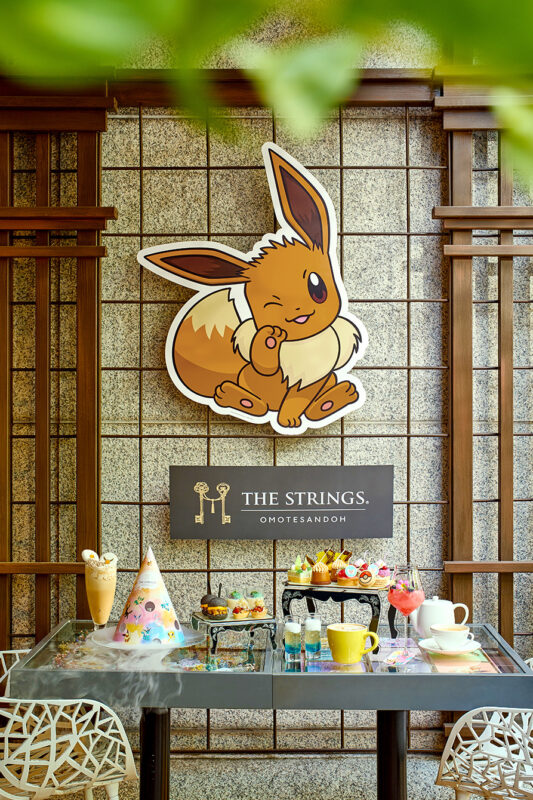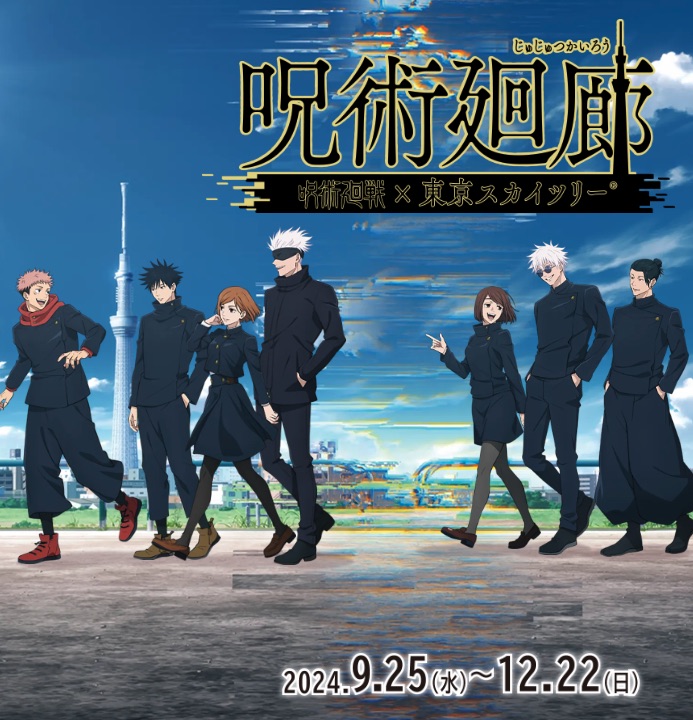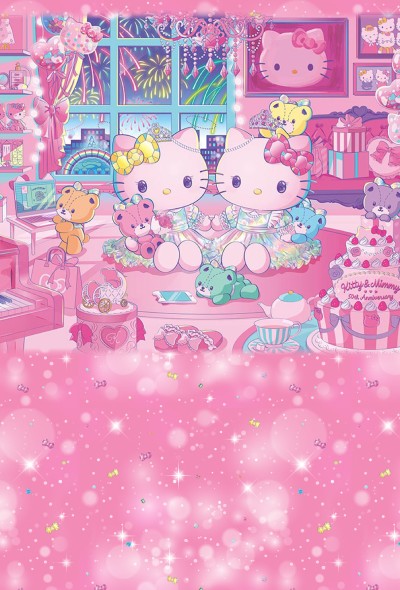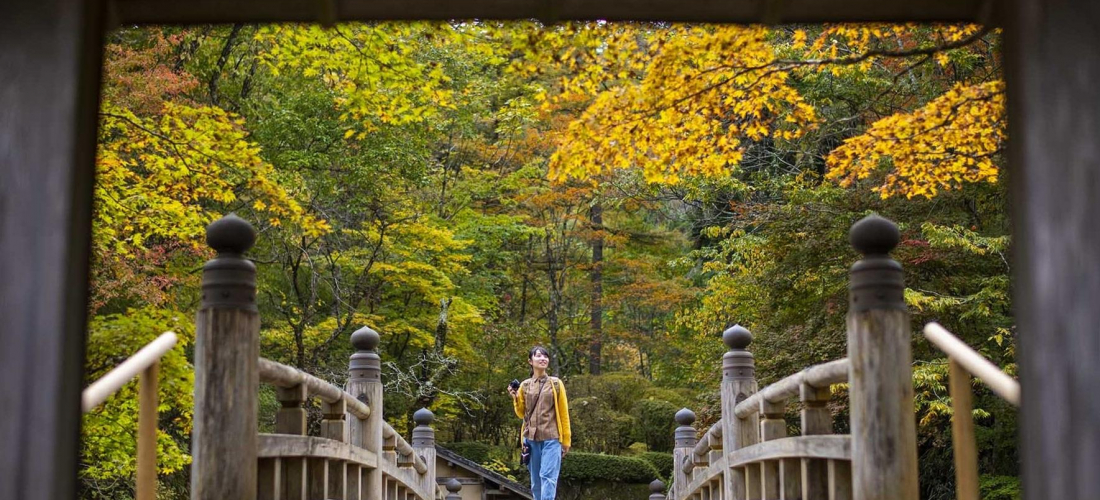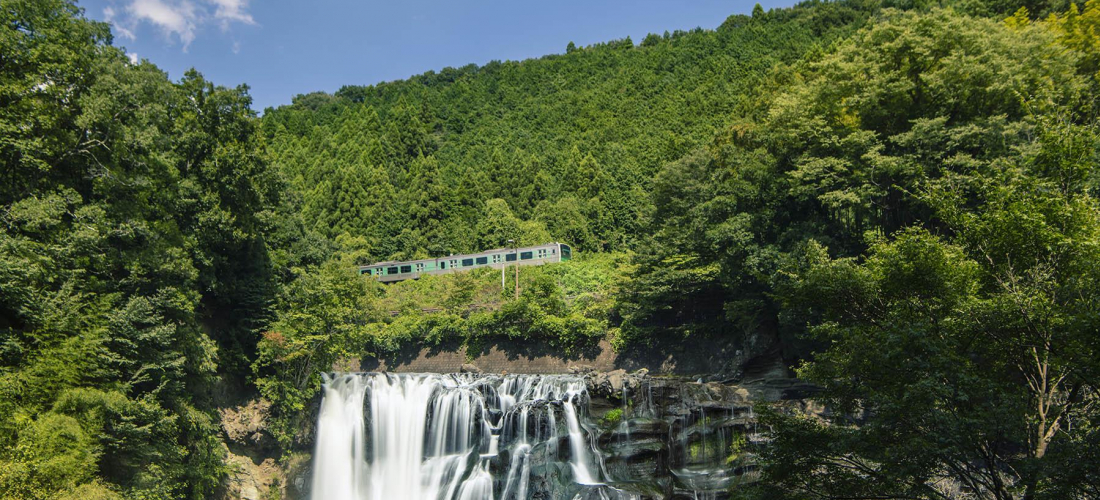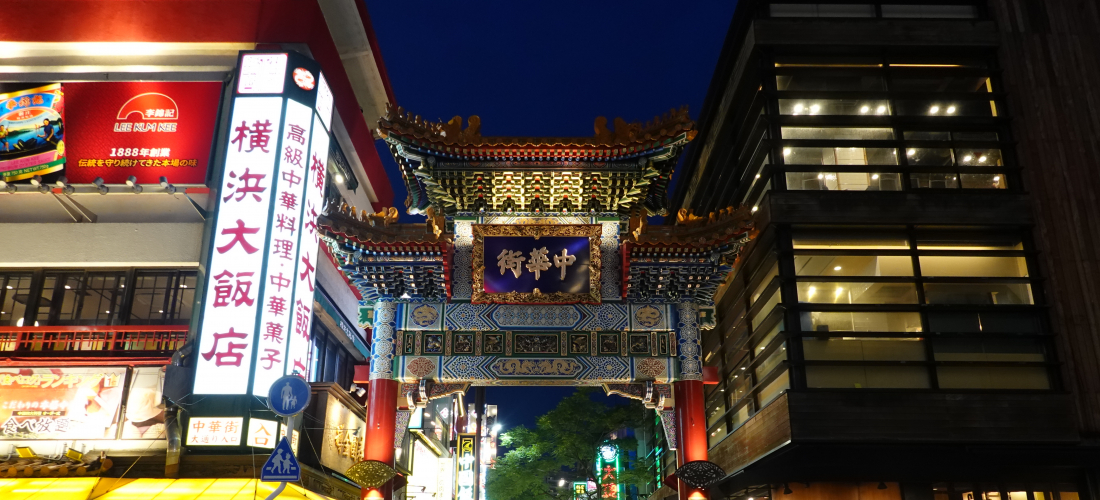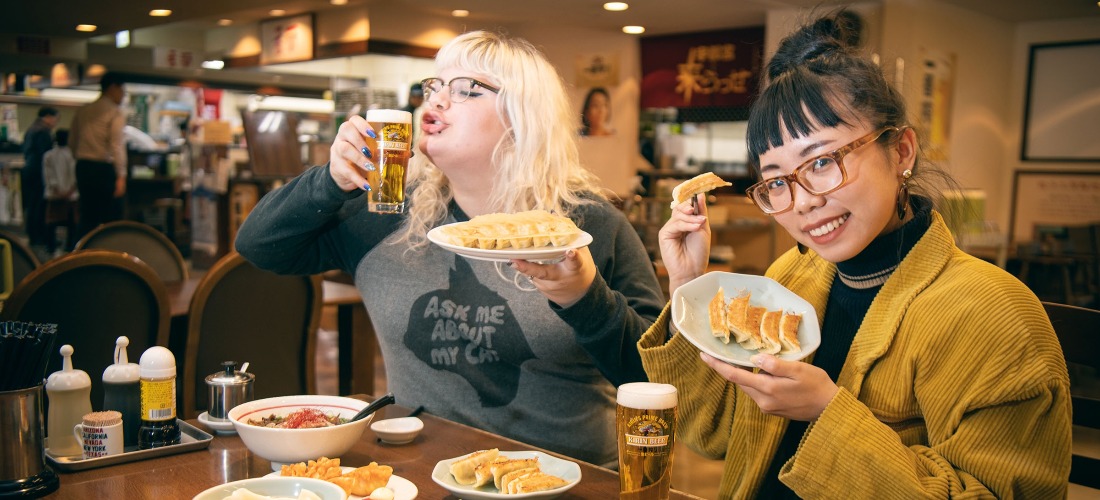
Each time we go to Tochigi Prefecture we get a different outlook. Rather than going to see a natural landscape, shrines/temples, or historical buildings like you would in Nikko, we came to a more modern, dumpling country Utsunomiya. Also known as a place to enjoy jazz and explore a beautiful cavern Oya History Museum, this interesting city changed our minds about what we thought Tochigi was.
① Tokyo → Utsunomiya How to get there?
⇩
② Gyoza Galore! At KIRASSE (来らっせ本店)
⇩
③ Man-Made Cave from the Edo Era: Oya History Museum
⇩
④ A Nighttime Flair: The FLAIR BAR
⇩
⑤ Where to next? Mashiko-cho (益子町)
🥟 ① Getting to Utsunomiya from Tokyo 🥟
It takes only 50 minutes by Shinkansen (bullet train) to get to Utsunomiya from Tokyo making a good day trip out of Tokyo. If you would prefer to drive, renting a car and driving from Tokyo is also an option. It takes only 3 hours from Tokyo to reach Utsunomiya, but with a car it also makes going around to different attractions very convenient!
🚝Going by train: You can get to Utsunomiya via Tohoku Shinkansen (covered by the JR Pass), JR Shonan Shinjuku Line, and the Tobu Utsunomiya Line
🚗 Rent a car by car: If there aren't any traffic jams, you can get there in 2 hours!
🥟 ② Gyoza Galore! At KIRASSE (来らっせ本店) 🥟
If you're a big dumplings fan, then you will definitely want to come to Utsunomiya and eat their gyoza. Their gyoza scene is unlike anything we've seen in Tokyo! Just to give you an idea, there are over 200 gyoza shops in Utsunomiya, and a lot of them are located right in front of the station. There is even a "gyoza tour map" that locates all of the gyoza shops in Utsunomiya so people can go gyoza shop hopping. What makes Utsunomiya's gyozas so special? Utsunomiya is known for 3 different types of gyoza; grilled, deep fried, and boiled and while there are a ton of options and ways the gyoza is served, the gyoza here are mainly stuffed with vegetables.
Rather than going from restaurant to restaurant, we found a place that has multiple different gyoza restaurants in one spot. KIRASSE has some of the most famous gyoza in Utsunomiya and is a great place to come to and with friends, relax, and eat tons of different gyoza!
KIRASSE is located in the vicinity of Utsunomiya Station in the basement of the well-known store Don Quijote. It is divided into two areas, one side has everyday "regular" shops, and the other changes daily, guaranteeing you eat a variety of gyoza every time.
Regular shops: These are 5 dumpling shops → Gyoza Utsunomiya Minmin (餃子宇都宮みんみん), Menmen (めんめん), Satsuki (さつき), Kyoran (香蘭), Gyoza Ryumon (ぎょうざの龍門)
Daily Shop: There are a total of 33 shops, but every day there's a different store. The site is in Japanese, but you can check KIRASSE's homepage to see which shop will be there the day you plan on going.
★KIRASSE (来らっせ)
Google Maps
*downstairs MEGA Don Quijote
⏰Weekdays 11am~8:30pm (last order 8pm), Weekends 11am~9pm (last order 8:30pm)
Open all year round
💻Official website (JPN)
① Go to the shop(s) you want and order. You will be given a number to take back with you to put on your table
② While the gyoza are being cooked, you can go back to your table and wait
③ Eat!! You can order at a number of restaurants (we ordered gyoza from each shop!) and the staff will bring your order to the table directly!
Japanese dumplings are mainly pan fried ("yaki gyoza"), but you can also eat boiled ("sui gyoza") and deep friend ("age gyoza") at KIRASSE. On top of that, there are a wide range of gyoza like some topped with leaks, Japanese citrus gyoza, kimichi gyoza, and spicy cheese gyoza. Some of the gyoza's dipping sauce is different too. While normally you dip the gyoza in soy sauce, vinegar, and chili oil (rayu), some of the gyoza is recommended to only eat with the restaurants specially made chili oil. By eating here it gives you a chance to explore Japan's dumpling culture and eat delicious food for a cheap price (price range between 250~720yen)!
Oya stone is a tuff yet fine volcanic stone that is precious to Tochigi Prefecture primarily because they were used as basic structures of buildings since the Edo era. Even famed American architect Frank Lloyd Write used Tochigi's Oya stone to build the Imperial Hotel in Tokyo. In Utsunomiya there is a man-made cave beneath a mountain that people would mine to get these Oya stone.
Besides being a beautiful stone quarry, The Oya History Museum (大谷資料館) contains the history of Tochigi's mining methods and evolution. You can still see signs of mining, marks left from a pickaxe. The stones were mined here from mid-Eno era until 1960, when machines started to be used. The number of stones that each person mined was 10 big 18x30x90 stones a day. It's said the number of strokes it took for a single stone was 4000 times. Then once machines were used, they were allowed to mine 50 stones a day. At the end of mining, it is said that about 10 million stones were cut out and shipped all over Japan. It was also used as an underground warehouse during the war.
The whole area covers an area of 20,000 square meters with an underground depth of 30, which is the size of a baseball field. While walking around the museum you will also see many surprising things like areas that were shot in famous music videos and movies. If you saw Rurouni Kenshin movie, you may recognize this place!
To get there you can take the #45 bus bound for Tateiwa (立岩) and get off at the Shiryokan Iriguchi stop (資料館入口). It is only about a 30 minute bus ride.
★Oya History Museum (大谷資料館)
Google Maps
⏰April~Nov 9am~5pm (final admission 4:30pm)
Dec~March 9:30am~4:30pm (final admission 4pm)
Closed: Dec~March every Tuesday, New Year's Holiday
💻Official website (JPN)
Utsunomiya's gyoza are of course famous all over Japan, but it is also a place to enjoy jazz and drinking. The father of the Japanese jazz, Watanabe Watanabe, was born in Utsunomiya which got the jazz scene started. You can find many jazz bars in Utsunomiya, but there is only one bar that is different from the rest.
For four years in a row, Japan's National Bartenders Competition was won by an Utsunomiya representative, creating Utsunomiya's bartending industry to gain people's attention.
The FLAIR BAR, which is a bar opened by flair bartender Miyazaki Ryohiko, is known as Japan's top bartender. When asked how he began, he said that he wanted to become a bartender but just being a bartender wasn't enough, he wanted to do something to stand out. It was there he discovered flair bartending and began studying by himself, practicing in parks. It wasn't long that he was named Japan's number one flair bartender. The FLAIR BAR holds a performance at 9:00 and 11:00 every night. It was a first for us to see flair bartending in Japan, and getting to see it in a small intimate bar was a real treat.
★The FLAIR BAR
Google Maps
⏰Sun~Thurs 6pm~1am, Fri and Sat 6pm~2am
💻Official website (JPN)
After a day of gyoza, jazz, and caves in Utsunomiya, our next stop was Mashiko-cho, Tochigi! Only being an hour by bus from JR Utsunomiya Station, Mashiko-cho is famous for its pottery and ceramics industry, Mashiko pottery (益子焼; Mashiko-yaki) which has a history of more than 100 years. Along with checking out some pottery, we went strawberry picking and to a local sake distillery!
Want to know more about Mashiko-cho? Stay tuned!
Be sure to look at JAPANKURU🐶 for more exciting articles every day!!
Or add us on Instagram and Facebook to share your Japanese pictures💖🗾
COMMENT
FEATURED MEDIA
VIEW MORE
Tokyo Shopping Spot Recommendation: New Balance Kichijoji #newbalance #newbalancekichijoji #newbalancejapan #japanesesneakerheads #shoppinginjapan #japantrip #도쿄여행 #도쿄쇼핑 #뉴발란스 #일본한정 #일본패션 #日本購物 #日本買衣服 #NB #日本時尚 #東京購物 #รองเท้าnewbalance #นิวบาลานซ์ #รองเท้าผ้าใบ #ช้อปปิ้ง #คิจิโจจิ #japankuru

See Kyoto Clearly With Your New Glasses #japankuru #kyoto #jins #교토여행 #진즈 #京都 #교토수족관 #가모가와 #kamogawa #kyotoaquarium

The First Japanese Converse Flagship: CONVERSE STORE HARAJUKU #japankkuru #conversejp_pr #conversejapan #harajuku #tokyotrip #converse #tokyoshopping #匡威 #帆布鞋 #東京購物 #原宿 #日本時尚 #일본쇼핑 #일본컨버스 #일본한정 #하라주쿠 #일본패션 #일본스트릿 #รองเท้าconverse #รองเท้าผ้าใบ #ช้อปปิ้ง #ฮาราจูกุ #คอนเวิร์ส

Japanese Makeup Shopping • A Trip to Kamakura & Enoshima With Canmake’s Cool-Toned Summer Makeup #pr #canmake #enoshima #enoden #에노시마 #캔메이크 #japanesemakeup #japanesecosmetics

⚔️The Robot Restaurant is gone, but the Samurai Restaurant is here to take its place. Check it out, and don't forget your coupon! 🍣신주쿠의 명소 로봇 레스토랑이 사무라이 레스토랑으로 부활! 절찬 쿠폰 발급중 💃18歲以上才能入場的歌舞秀,和你想的不一樣!拿好優惠券去看看~ #tokyo #shinjuku #samurairestaurant #robotrestaurant #tokyotrip #도쿄여행 #신주쿠 #사무라이레스토랑 #이색체험 #할인이벤트 #歌舞伎町 #東京景點 #武士餐廳 #日本表演 #日本文化體驗 #japankuru #japantrip #japantravel #japanlovers #japan_of_insta

Japanese appliance & electronics shopping with our KOJIMA x BicCamera coupon! 用JAPANKURU的KOJIMA x BicCamera優惠券買這些正好❤️ 코지마 x 빅 카메라 쿠폰으로 일본 가전 제품 쇼핑하기 #pr #japankuru #japanshopping #kojima #biccamera #japaneseskincare #yaman #dji #osmopocket3 #skincaredevice #日本購物 #美容儀 #相機 #雅萌 #日本家電 #일본여행 #면세 #여행꿀팁 #일본쇼핑리스트 #쿠폰 #일본쇼핑 #일본브랜드 #할인 #코지마 #빅카메라 #japankurucoupon

Odaiba's DiverCity Tokyo Plaza is home to the famous real-size 20m-tall Unicorn Gundam, and the popular shopping center has even more Gundam on the inside! Check out the Gundam Base Tokyo on the 7th floor for shelves upon shelves of Gunpla, and the Gundam Base Tokyo Annex on the 2nd floor for cool anime merchandise. Both shops have tons of limited-edition items! #pr #odaiba #tokyo #tokyotrip #japantrip #japantravel #PR #divercity #divercitytokyoplaza #tokyoshopping #gundam #unicorngundam #gundambasetokyo #anime #otaku #gunpla #japankuru #오다이바 #다이바시티도쿄 #오다이바건담 #건담 #일본건담 #건프라 #건담베이스도쿄

